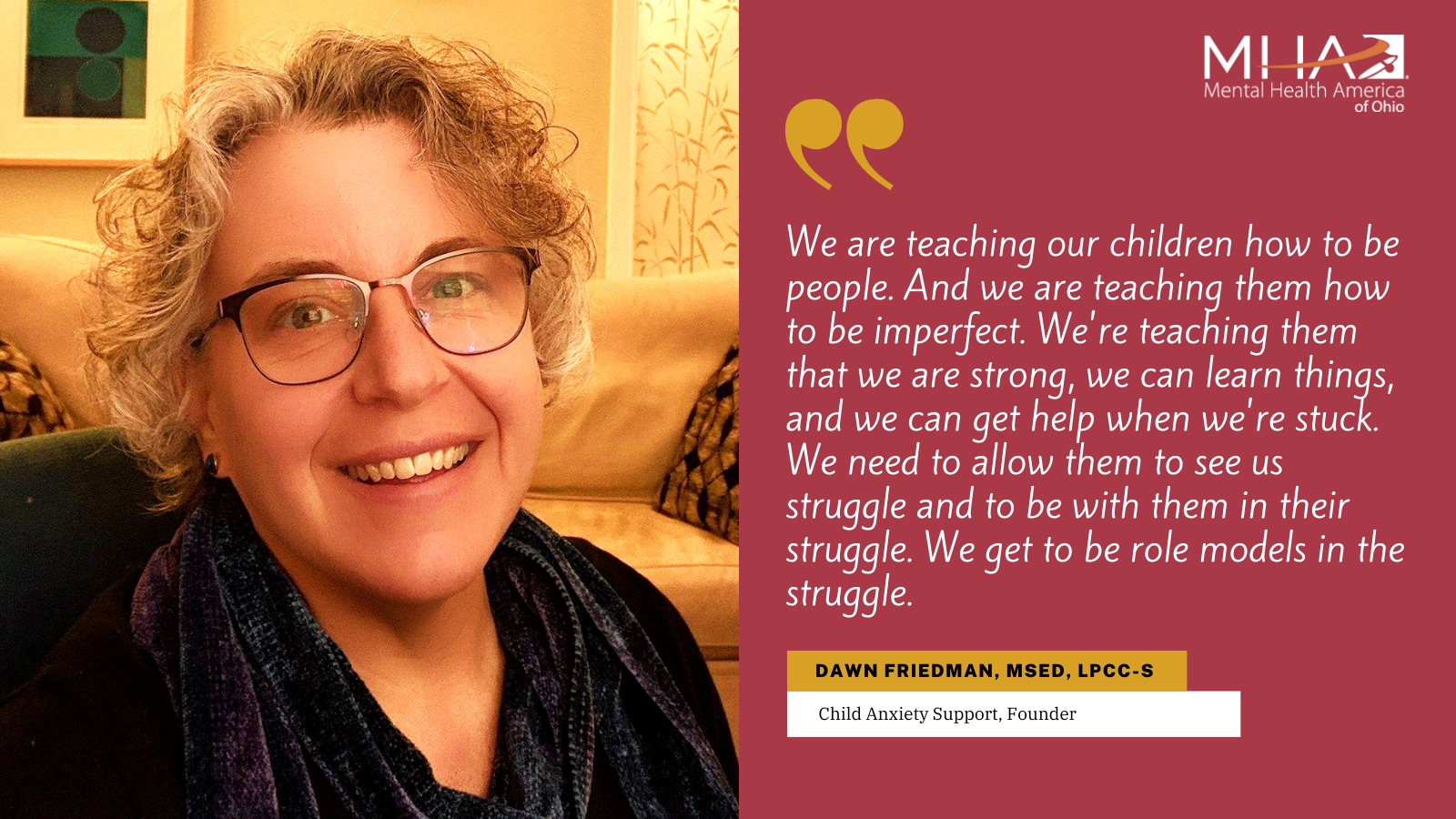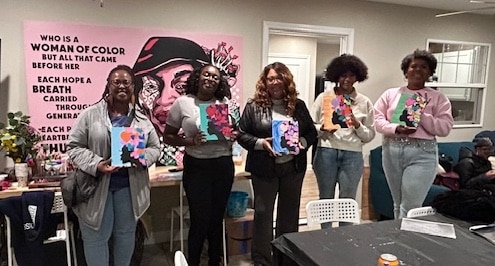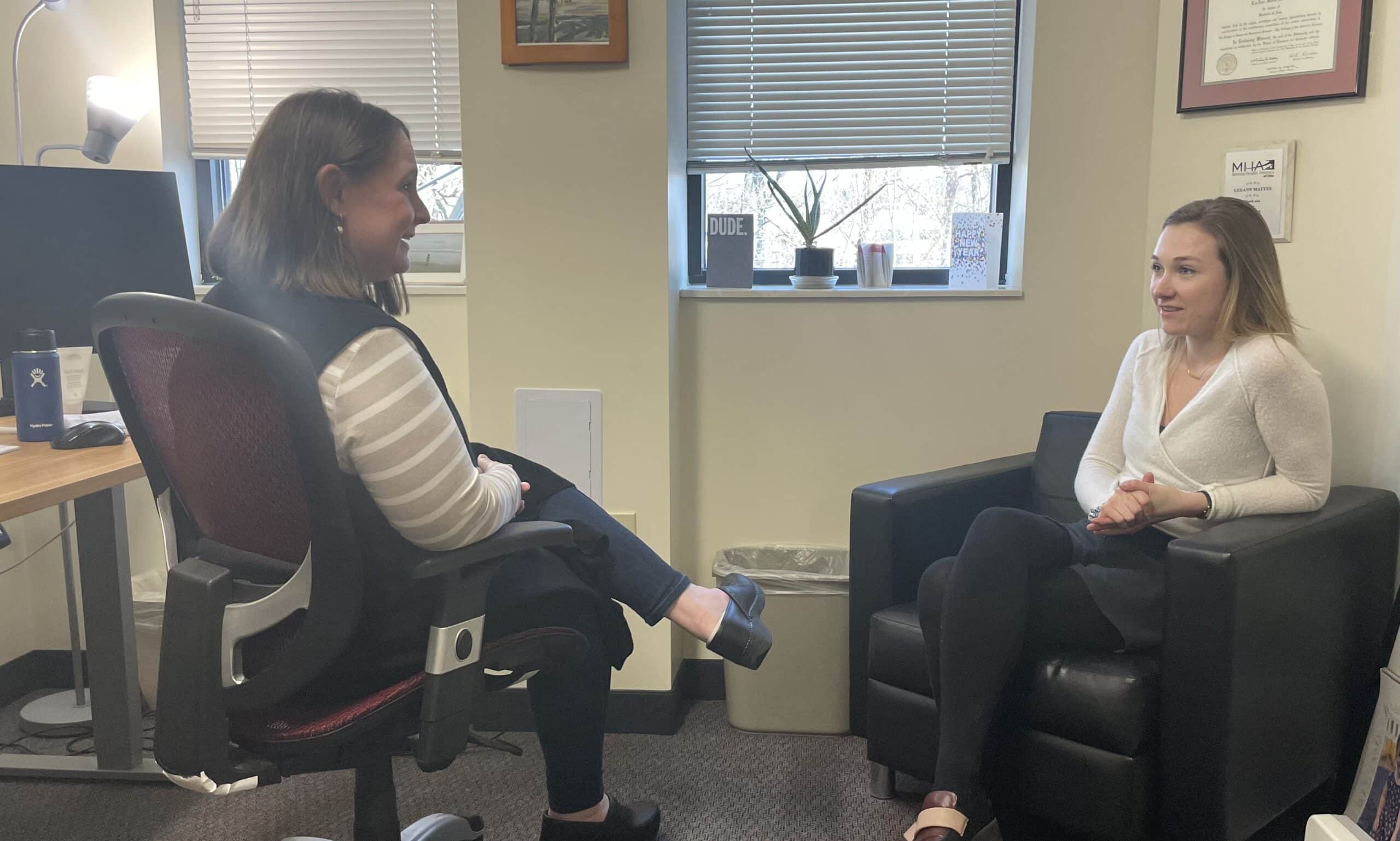Dawn Friedman, MSEd, LPCC-S is the founder of Child Anxiety Support and leads courses for parents of children with anxiety, offering support and resources so they can be empowered to help their children through challenges.
“A lot of kids don’t need a therapist,” Dawn says. “They need a parent who can coach them through life, especially life with anxiety. Research shows intervention with parents is far more effective than with physicians.”
According to recent reports, youth mental illness is on the rise due to several factors. The pandemic has made kids increasingly isolated from their friends, extended family, and favorite activities. But they are also more plugged into social media than ever before and free access to information about world issues has only exacerbated the issue.
“Anxiety is catching and we are living in anxious times,” she says. “Even if we think we’re protecting them from our worries, kids still pick up on them. So, if we’re worried about the pandemic, if we’re worried about going back to work, if we’re worried about politics, then our kids are too. We’ve done a really good job of telling them how alarming things are and not a really good job of saying, ‘But there’s hope.’”
Dawn elaborates by saying that children do not have a developed concept of time and cannot see that things can change. They can only see what is happening in the moment, which explains why a middle schooler, for example, may become devastated when their friends aren’t speaking to them. “They cannot fathom a time when it won’t matter,” she says. “It’s the most important thing that’s ever happened.”
So how could a child not be anxious right now? This is the reality for many parents, and unfortunately there are simply not enough professionals available to help. That’s why Dawn is coming up with tools for parents to navigate these challenges at home.
An important first step is for parents to address their own anxiety and determine the root of it. For example, if the non-stop news cycle is distressing, reassessing how often or where they consume news could be helpful.
“It’s about finding ways to tune into hope,” she says. “The more that you can learn to calm, the more that you can learn to get grounded, the more that you can respond thoughtfully instead of reactively, the better. Anxiety is catching, but so is calm.”
Children exhibit anxiety in many ways. Some kids may externalize it through yelling, hitting, or other forms of aggression. Some kids may become avoidant. Other children may internalize their anxiety, and this can be harder to spot. They may stress about getting perfect grades or excelling at sports. These behaviors are often rewarded, which reinforces a child’s desire to push themselves further. No matter how anxiety is showing up in a child, it is important for a parent to recognize it so that they know what to do next.
Dawn explains that many parents will immediately want to solve the problem for their child. But sometimes, anxiety doesn’t need a response. Anxiety is a normal human function like anger, sadness, or joy, and it stems from a necessary and vital function for human survival. For this reason, she explains that sitting in uncertainty, in the unknown, can be a much better approach.
“So, imagine a thunderstorm is coming and your child asks, ‘Is a tornado going to kill us all?’ You can say, ‘It feels scary when there’s a storm coming,’ and you can talk with them about the things that you can do. Kids need to learn how to tolerate the distress of being anxious.”
Sometimes the best thing a parent can do for a child is show them that mistakes are normal. Discomfort is normal. Showing them how to handle it is going to better prepare them for life than handling it for them.
“We are teaching our children how to be people. And we are teaching them how to be imperfect. We’re teaching them that we are strong, we can learn things, and we can get help when we’re stuck. We need to allow them to see us struggle and to be with them in their struggle. We get to be role models in the struggle.”
For more support, check out these resources:












